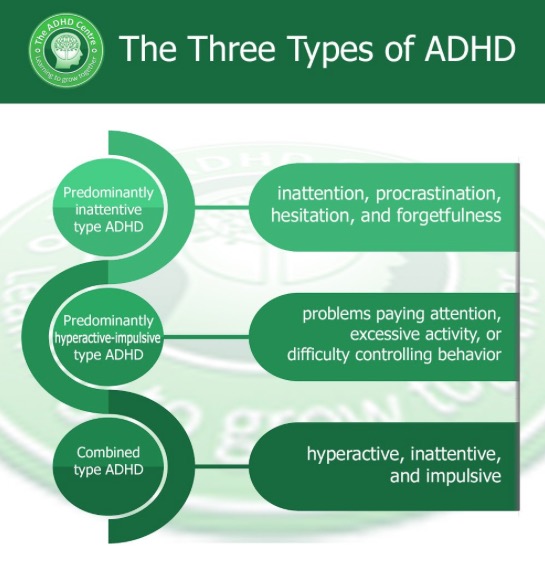
filling out forms, remembering appointments, meeting deadlines). Simultaneously, experiences of ADHD symptoms often change over the course of development: hyperactivity may be replaced by feelings of ‘inner restlessness’ and discomfort inattention may manifest as difficulty completing chores or work-based activities (e.g.
#DIFFERENCE BETWEEN ADHD AND ADD FULL#
The proportion meeting full diagnostic criteria for ADHD then continues to decline in adult samples. Two studies from child mental health clinics in the UK and the Netherlands have reported persistence in around 80% of children with the combined type presentation into early adulthood, potentially relating to the high severity of ADHD in this group and the use of more objective ratings. More recent studies in large clinical cohorts indicate that persistence of ADHD into adulthood may be much more common. A meta-analysis of longitudinal studies published in 2005 showed that up to one-third of childhood cases continued to meet full diagnostic criteria into their 20s, with around 65% continuing to experience impairing symptoms.

This trajectory does not appear to be different in affected males or females. ĪDHD is present in childhood and symptoms tend to decline with increasing age, with consistent reductions documented in hyperactive-impulsive symptoms but more mixed results regarding the decline in inattentive symptoms. Symptoms persist over time, pervade across situations and cause significant impairment. Three primary subtypes can be identified: predominantly inattentive, hyperactive-impulsive, and combined presentations. It is characterised by difficulties in two subdomains: inattention, and hyperactivity-impulsivity. Treatment with pharmacological and psychological interventions is expected to have a positive impact leading to increased productivity, decreased resource utilization and most importantly, improved long-term outcomes for girls and women.Īttention-deficit/hyperactivity disorder (ADHD) is a common neurodevelopmental condition described in diagnostic classification systems (ICD-10, DSM-5 ). It is essential to adopt a lifespan model of care to support the complex transitions experienced by females that occur in parallel to change in clinical presentation and social circumstances. It is important to move away from the prevalent perspective that ADHD is a behavioural disorder and attend to the more subtle and/or internalised presentation that is common in females. This practical approach based upon expert consensus will inform effective identification, treatment and support of girls and women with ADHD.

Furthermore, we determined the broader needs of these patients and considered how multi-agency liaison may provide the support to meet them.

These included symptomatic differences, gender biases, comorbidities and the compensatory strategies that may mask or overshadow underlying symptoms of ADHD. The potential challenges of working with this patient group were identified, as well as specific barriers that may hinder recognition. ResultsĪ consensus was reached offering practical guidance to support medical and mental health practitioners working with females with ADHD. The United Kingdom ADHD Partnership hosted a meeting of experts to discuss symptom presentation, triggers for referral, assessment, treatment and multi-agency liaison for females with ADHD across the lifespan. Comprehensive assessment and appropriate treatment is hoped to enhance longer-term clinical outcomes and patient wellbeing for females with ADHD. This consensus aims to provide a better understanding of females with ADHD in order to improve recognition and referral. Studies suggest that females with ADHD present with differences in their profile of symptoms, comorbidity and associated functioning compared with males. There is evidence to suggest that the broad discrepancy in the ratio of males to females with diagnosed ADHD is due, at least in part, to lack of recognition and/or referral bias in females.


 0 kommentar(er)
0 kommentar(er)
